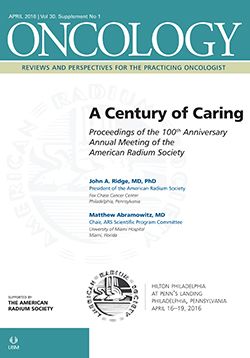(S034) Frequency of Whole-Breast Radiation Therapy Following Intraoperative Radiation Therapy Due to Criteria Identified by Lumpectomy
Using these criteria, about 6% of patients preoperatively meeting no ASTRO APBI consensus cautionary or unsuitable risk factors are recommended for WBRT after IORT. This rate is much higher for patients meeting cautionary criteria before resection.
Eric A. Mellon, MD, PhD, Luis E. Joya, Amber Orman, MD, Michael E. Montejo, MD, Christine Laronga, MD, Marie C. Lee, MD, Susan J. Hoover, MD, Nazanin Khakpour, MD, Pamela F. Kubal, ARNP, Roberto Diaz, MD, PhD; H. Lee Moffitt Cancer Center and Research Institute
PURPOSE: For low-risk early breast cancers, intraoperative radiation therapy (IORT) can be an efficient alternative to fractionated whole-breast RT (WBRT). However, some patients are recommended for WBRT after IORT due to postoperative pathologic findings.
METHODS: A single-institution retrospective chart review of all nonrecurrent IORT cases (20 Gy to the tumor cavity using a 50-kV photon applicator) treated between January 2011 and October 2015 was performed to identify patients who subsequently received WBRT. Eligibility at our institution for accelerated partial breast irradiation (APBI) is based on the 2009 Consensus Statement from the American Society for Radiation Oncology (ASTRO). We offered IORT as the sole radiation therapy modality to patients meeting 0–1 “cautionary” criteria and no “unsuitable” criteria prior to lumpectomy. WBRT was recommended following IORT when ≥ 2 cautionary and/or ≥ 1 unsuitable criteria were met after accounting for resection pathology or per physician or patient preference. Margin status allowed for re-resections to clear margins.
RESULTS: There were 161 IORT patients; 15 (9%) patients required WBRT. Of those, 3 of 15 patients elected not to receive WBRT. An additional 10 patients received WBRT due to patient or physician preference (for 22 recipients of WBRT, or 14% of the patient population). Prior to resection, 19 of 161 (12%) patients met one cautionary criterion. Of those, additional criteria were assigned to 7 of 19 (37%) based on final pathology prompting a recommendation of WBRT. In total, 41 of 161 (25%) patients were assigned ≥ 1 cautionary or unsuitable criterion from resection pathology. Of 11 patients aged 50–60 years, 6 (55%) were recommended for WBRT. Only 8 of 142 (6%) patients with no criteria preoperatively gained ≥ 2 unsuitable criteria or ≥ 1 cautionary criterion on final analysis.
CONCLUSION: Using these criteria, about 6% of patients preoperatively meeting no ASTRO APBI consensus cautionary or unsuitable risk factors are recommended for WBRT after IORT. This rate is much higher for patients meeting cautionary criteria before resection.
Proceedings of the 98th Annual Meeting of the American Radium Society - americanradiumsociety.org

Targeted Therapy First Strategy Reduces Need for Chemotherapy in Newly Diagnosed LBCL
December 7th 2025Lenalidomide, tafasitamab, rituximab, and acalabrutinib alone may allow 57% of patients with newly diagnosed LBCL to receive less than the standard number of chemotherapy cycles without compromising curative potential.